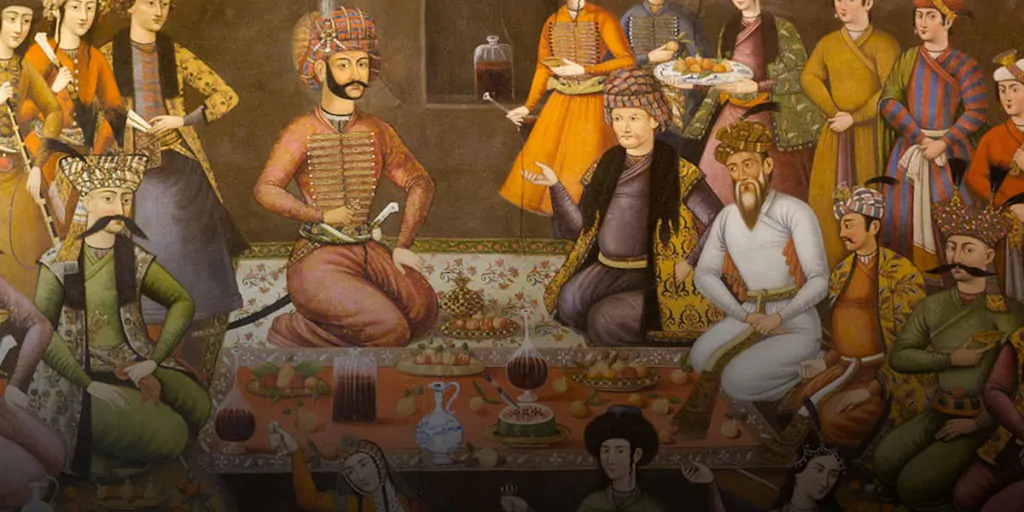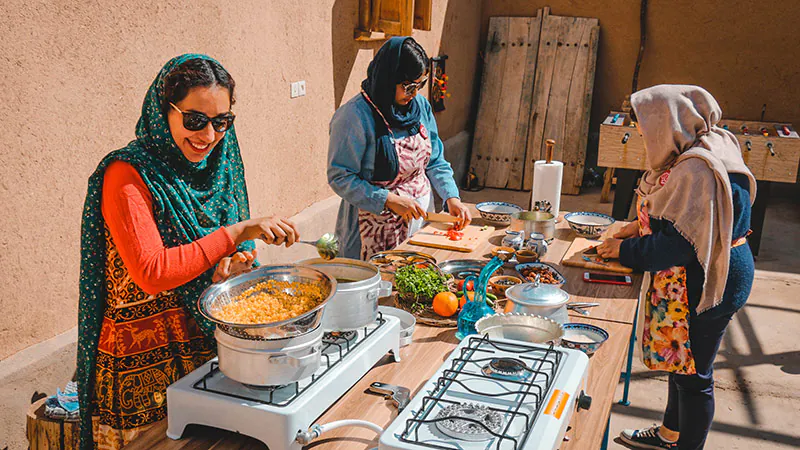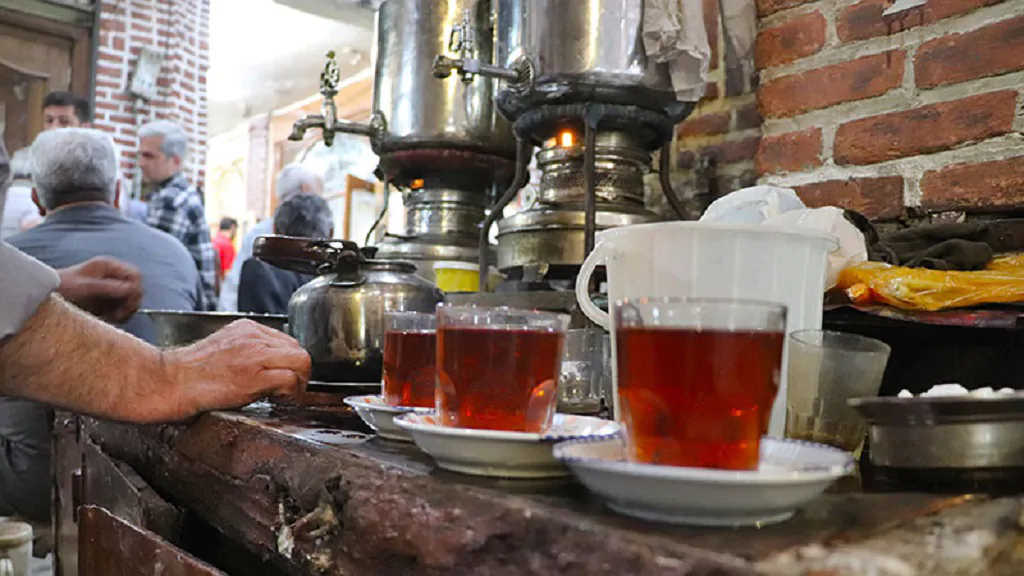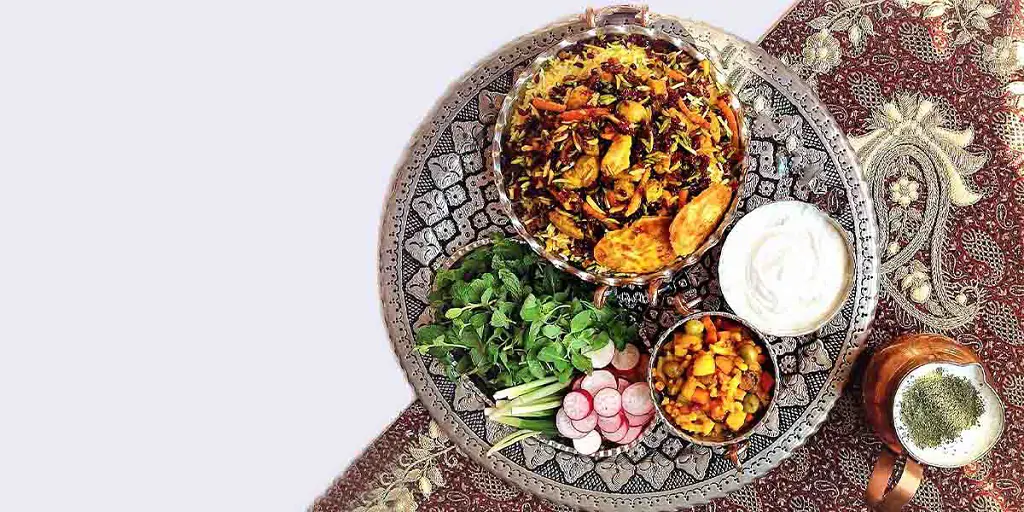Ancient persian cuisine represents the country’s long and rich history and cooking traditions passed down for generations. A wide range of empires, religions, and cultural influences have shaped the country’s food culture from the ancient Persians to modern-day Iran. International Cuisine has been influenced by Iranian flavors, ingredients, and techniques from ancient Silk Road times to modern fusion. This article will examine the history and evolution of Iranian cuisine, its ancient roots, influences from neighboring regions, unique ingredients and flavors and how Iranian Cuisine has influenced global food trends and how we eat today.
So, are you ready to embark on this mouthwatering journey through time and flavors about ancient persian culture and foods? Let’s begin!
Ancient Persian Cuisine
Iranian food culture has a long and fascinating history that dates back thousands of years. Various empires, including the Achaemenid, Parthian, Sassanian, and Safavid, have shaped Iranian cuisine over thousands of years.
The pre-Islamic Iranian food culture largely disappeared over time, with only a few surviving cases that shed light on the culinary traditions of the royal class.
Pre-Achaemenid Era
It is believed that Iranian cuisine originated more than 2,500 years ago, before the Achaemenid era. At that time, Iranians lived primarily as pastoralists and farmers, cultivating crops like barley, wheat, and vegetables and raising livestock like sheep, goats, and cattle.
These early agricultural practices laid the groundwork for developing culinary traditions later in persian food history.
Achaemenid Empire
It was during the Achaemenid Empire, which ruled from 550 to 330 BCE, that Iranian food culture flourished. As a result of the empire’s extensive trade networks, new foods, and culinary techniques were exchanged, such as spices from India and bread-making techniques from Mesopotamia.
Parthian Empires
Iranian cuisine was continuously expanded and refined during the Parthian and Sassanian empires (247 BCE – 224 CE). Fruits, nuts, and herbs became more prominent during this time, and slow cooking was established to enhance flavors and textures.
Sassanian Empire
Persian kings employed chefs during the Sassanian era to ensure that the food they served was high quality. New cooking techniques, such as braising and stewing, were developed during this period, which are still commonly used today.
In the years following the collapse of the Sassanid Kingdom, Arabs became familiar with the Iranian lifestyle. Iranians’ presence in the Abbasid Caliph’s palace further increased this familiarity. Iranian cuisine and food preferences also influenced the Seljuk, Ilkhanid, and Mongol dynasties, which ruled Iran in different periods. Moreover, there is evidence that foreign invaders also impacted Iranian food. For instance, the use of cranberries, popularized by the Turks, or the types of flour predominantly used in Central Asia are examples of this influence.
The Influence of the Silk Road
The Silk Road played a significant role in shaping Iranian food culture. As a major trading route between China and Europe, it brought new ingredients and cooking techniques to Iran. The Persians quickly adopted these new flavors, incorporating them into their cuisine. They also introduced their culinary traditions to the traders, spreading their influence far and wide.
Influences from Neighboring Regions On Iranian Cuisine
There are also influences from neighboring regions on Iranian cuisine, including Arab countries, Central Asia, and the Ottoman Empire.
Arab Conquest
As a result of the Arab conquest of Iran in the 7th century, new ingredients and culinary techniques were introduced to the region. The Arabs introduced saffron, cardamom, cinnamon, and sweet and sour flavors.
Mongol Invasion
The Mongol invasion in the 13th century profoundly impacted Iranian food culture. The Mongols introduced new ingredients, such as noodles from China and dumplings from Central Asia, which were incorporated into Iranian cuisine and remain popular to this day.
Ottoman Empire
The Ottoman Empire has also left its mark on Iranian cuisine, particularly in using ingredients such as tomatoes, peppers, and eggplants introduced from the New World through Ottoman trade routes.
The Role of Religion in Iranian Food Culture
Here are some religion and their effects on Iranian food culture:
Zoroastrianism
Zoroastrianism, the ancient religion of Iran, played a significant role in shaping the country’s food culture. Many traditional Iranian dishes are rooted in Zoroastrian rituals and celebrations, such as the “sabzi polo” festive dish, which is prepared with fresh herbs to symbolize renewal and growth during Nowruz, the Persian New Year.
Islam
The arrival of Islam in Iran brought new dietary restrictions and guidelines, which influenced the development of Iranian cuisine. The pork was prohibited, and the consumption of alcohol was discouraged, leading to the widespread use of non-alcoholic beverages like “sharbat” and “doogh” to accompany meals. The wine was a popular drink among Iranians before Islam.
Halal food in Persian cuisine
Having halal food is a significant part of Persian cuisine after Islam. Iranian regulations prohibit alcoholic beverages from accompanying halal food. The slaughtering of meat and chicken for cooking must follow Islamic guidelines. Iranian cuisine also prohibits using certain animals as non-halal, such as pigs, dogs, and mice.
Alcohol and drugs, including marijuana, are forbidden in Iran. As a result of their prohibited status, official establishments do not serve these substances. Iranian cuisine is characterized by strict adherence to Islamic dietary laws and regulations.
Ingredients and Flavors
Ancient Persian cuisine is known for its mild taste, balanced and subtle flavor profile achieved through the skillful use of various spices. Although many herbs are used in Persian dishes, the chef aims to create a harmonious and well-rounded taste.
Herbs and Spices
Persian cuisine is full of fragrant herbs and spices that are fresh and fragrant. As for spices, saffron, turmeric, cinnamon, and sumac are commonly used to add depth and complexity to Persian dishes. Some herbs used in Iranian dishes include parsley, cilantro, mint, dill, and fenugreek.
Rice and Bread
Rice and bread are staple components of Iranian meals. There are various types of rice dishes, such as “chelow” (white rice), “polow” (rice mixed with other ingredients), and “tahdig” (crispy rice at the bottom of the pot). Bread also comes in many forms, including “sangak” (a flatbread baked on hot pebbles), “barbari” (a thick, oval-shaped bread), and “lavash” (a thin, unleavened flatbread).
Meat and Dairy
Meat, especially lamb and chicken, is central to Iranian cuisine. It is often marinated in yogurt and flavored with spices before being grilled or slow-cooked. Dairy products, such as yogurt, cheese, and “kashk” (a type of dried whey), are also commonly used in Iranian dishes.
Iranian Culinary Techniques
In Iranian cuisine, various cooking techniques have been passed down for generations and have influenced other cuisines worldwide.
Slow Cooking
Slow cooking is a feature of Iranian cuisine, helping flavors blend and develop over time. Foods like “khoresht” (stew) and “dolma” (stuffed vegetables) are often simmered for hours to achieve their desired flavor and texture.
Grilling
Grilling is another popular cooking method in Iran, particularly for preparing “kabab” (skewered meat). “Chelow kabab,” the national dish of Iran, consists of marinated meat grilled over an open flame and served with rice and grilled tomatoes.
About Ancient Persian Culture
Ancient Persian culture, with its rich heritage and historical significance, encompassed a diverse range of traditions and customs. The ancient Persians, known for their sophisticated civilization and contributions to various fields, including art, literature, and architecture, also had a culinary tradition. Persian cuisine, deeply rooted in ancient and traditional foods, reflects the cultural diversity and influences that have shaped the region over centuries. The culinary practices of ancient Persia incorporated a wide array of ingredients such as grains, fruits, herbs, and spices, resulting in a harmonious blend of flavors and aromas.
From the famous saffron-infused rice dishes like “Chelow” to the aromatic stews like “Ghormeh Sabzi” , Mirza ghasemi special recipe and the delicate pastries like “Ghotab,” Persian cuisine offers a glimpse into the ancient culinary heritage of the region. These traditional foods not only served as sustenance but were also an integral part of Persian cultural gatherings and celebrations, fostering a sense of community and shared identity.
Today, many of these ancient and traditional Persian dishes continue to be enjoyed and appreciated, carrying the legacy of ancient Persian culture into the modern era.
By engaging in Iranian food tourism, visitors not only have the opportunity to savor ancient and traditional dishes but also to connect with the local communities, learn about the culinary traditions passed down through generations, and gain a deeper understanding of the rich cultural heritage of Iran.
Traditional Persian Preserved Foods
Iranians have long used various preservation methods to extend the shelf life of their food. “Torshi” (pickled vegetables) and “moraba” (sweet fruit preserves) are two examples of traditional Persian preserved foods that add flavor and variety to meals.
Embarking on an Iran culinary tour unveils a world of Traditional Persian Preserved Foods, where flavors are captured and preserved with meticulous craftsmanship. From tangy torshi to aromatic pickled vegetables, these culinary treasures offer a delightful exploration of Iran’s rich gastronomic heritage.
Conclusion
From ancient Persia to modern-day Iran, the cuisine has evolved and adapted while staying true to its roots. Whether enjoying a classic dish like chelow kabab or trying a modern fusion, Iranian cuisine will surely delight the senses and tantalize the taste buds.



















